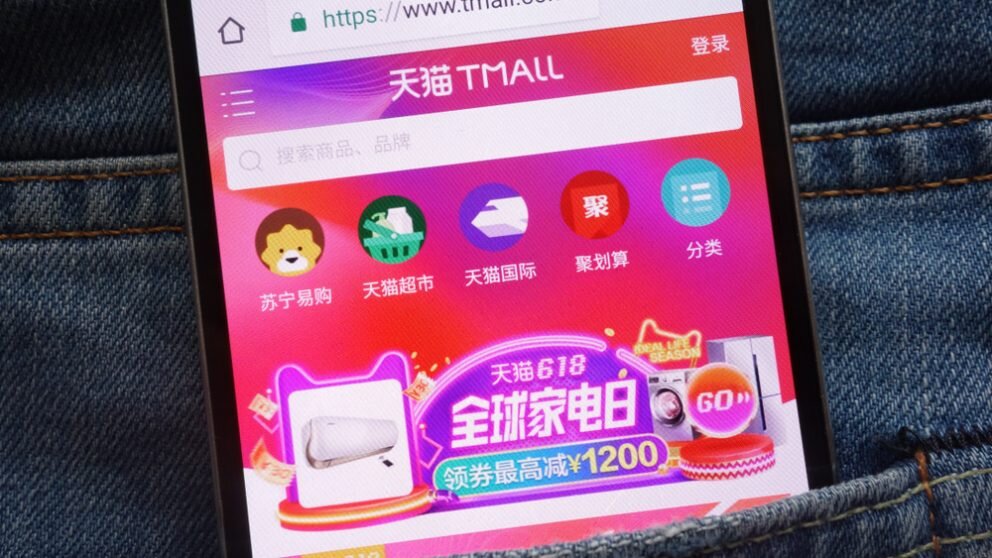Double 11 (Singles’ Day) is quickly approaching and brands are already developing their marketing, merchandising and promotional plans for one of China’s premiere online shopping festivals.
This year, over 200,000 brands and more than 500 million users are expected to participate in this year’s festival, which is 100 million users more than last year. Alibaba expects to see their full day sales surpass last year’s record of 268.4 billion yuan (USD $38 billion), when their platforms had an average of 544,000 transactions per second.
As many markets face pullbacks due to the global pandemic, e-commerce in China is still booming, led by e-commerce giants, Tmall, Taobao and Jingdong (JD.com).
Alibaba is encouraging foreign brands to join its platforms, with plans to add 20,000 new brands between 2019 and 2022.
For many foreign brands that are new to China or looking to expand in China, they have likely considered Tmall or JD.com and therefore been faced with how to select the right TP.

What is a TP?
A TP, which is short for “Tmall Partner” or “Taobao Partner”, is a specialised and certified e-commerce operator that offers brands a one-stop solution to manage their entire e-commerce operations, to sell to Chinese consumers online.
In short, your brand will need to work with a TP if you want to sell on one of the major e-commerce platforms in China.
Brands should only work with certified TPs that are recommended by the marketplaces, since these partners will have sufficient knowledge and relationships with the marketplaces to maximise the stores’ performance.
A TP will provide a range of functions, such as:
-
Set up, design, and maintenance of the online store
-
Merchandising, price, promotion, and marketing planning
-
IT integration between the virtual store and the brand’s IT systems
-
Operation of the online store, including order management, payments, etc
-
Warehouse and fulfilment
-
Customer service (pre-sales & after-sales)
-
Digital performance marketing within the marketplace
-
Management of live streaming and KOLs within the marketplace ecosystem
-
Handling of returns, cancellations, and complaints
-
Weekly, monthly, and quarterly reporting & planning
Should I open a store on Tmall?
China is the world’s largest online retail market. E-commerce sales in China last year reached USD $1.9 trillion - more than three times larger than the online retail market in the US. Despite its size, e-commerce in China continues to grow at phenomenal rates year on year.
The king of online retail in China is Alibaba, with leading platforms Taobao and Tmall. Alibaba captures 55.9% of all online retail sales in China, followed by JD.com with 16.7% and Pinduoduo 7.3%.
That means that half of all e-commerce in China is controlled by one company, and the top 3 companies control 80% of all online retail sales. It's not surprising that brands turn to TPs to help get them onto Tmall and JD.com.
However, a brand-owned Tmall or JD store may not be right for every brand, especially when first entering China.
Remember, there are other routes to market in China outside of using a TP and marketplaces like Tmall and JD.com. In general a full assessment of routes to market including WeChat commerce, D2C sites and social commerce options should be considered. Where possible, diversification is recommended and ensures not all data, traffic and revenue is reliant on a single TP/marketplace relationship.
These marketplaces come with relatively high set up costs and monthly fees to TPs, plus commissions to the TP and marketplaces. Additionally, a percentage of sales should be allocated for marketing and sales promotions within the platform, and an additional percentage of sales should be put towards digital marketing across other core channels.
At Hot Pot we have taken on many clients at a pivotal point - when they have had a successful year 1 only to see the initial “free” traffic from the marketplaces dry up and the prohibitive cost of paid advertising/traffic packages squeeze margins to unsustainable levels.
To minimise the risk of failure, brands need to ensure that they develop a holistic approach across a range of core channels, define a brand proposition to drive sufficient revenue to cover costs, and find the right partners to guide them on their journey.

Key Considerations for Selecting a TP
Selecting a TP can be a bit like shopping for a car. If you begin the process saying, “I need a car,” then there are an overwhelming amount of options and non-comparable benefits. Start by gathering a list of key requirements and criteria, to immediately narrow the search. Just like a car search, selecting a TP isn’t about identifying your favourite TP, but uncovering which TP best supports your needs and long-term objectives. You’re looking for a partner on your long-term China retail journey.
-
Route to Market: What is your brand’s ideal route to market? What are your core channels? For example, consider cross-border, brand owned, marketplaces (Tmall JD.com), specialist, etc. Then, understand the strengths and market approaches that various TPs and distributors offer. Continuing with the car analogy, a sports car is nice, but it doesn’t fit a family of five. Eliminate the TPs that have a different or unsuitable core focus.
-
TP Capabilities: A TP won’t be your only partner in China, but operationally they will be critical to your success within the marketplaces. Consider, where are they based? How strong is their relationship with Tmall? On what scale do they operate and are you able to visit to see the operations in action? What is their pricing model? What experience do they have within the category? How strong are they with O2O? How strong is their client service team? How well do their IT systems integrate with your platforms? What can they offer with logistics and warehousing solutions? Vitally, do they “get” your brand and will it be in good hands?
-
How attractive are you to the TP? As the buyer sourcing a vendor you may expect that the leverage lies with you. Often first-time China brands are surprised to find they are doing a lot of legwork to pitch their attractiveness to the TP. TPs will consider your brand globally, your brand presence in China, existing sales, and your proposed go-to-market strategy, inclusive of investment levels. They do this to assess how large the brand could be in China. Since they are paid based on commissions, they want to take on brands that will deliver the largest sales, with high growth potential resulting in the biggest upside for themselves. Is the TP across the table hungry to help you succeed, or will they be focused on ‘more important’ clients in their portfolio?
-
Ways of Working: One of the biggest mistakes that we see with brands in China is that they assume the TP/distributor will do everything, which often leads to partner friction, troubled communication, and missed opportunities. As you are searching for a TP, do you understand the allocation of responsibilities? What is their overall e-commerce strategy? Who controls brand assets and commercial policies, compared with overall eCommerce operations? How much input into the brand, the store image, and store maintenance will you have? Additionally many TPs will claim to offer holistic marketing solution outside of the Tmall/JD ecosystem, which is rarely a core focus and can lead to long-term destruction of the brand. It is vital to drill down on which areas your TP can credibly own.
-
Building a holistic model for success: Will you have the resources in place to manage the TP effectively? How will you provide assets? Are the assets localised for China? What commercial rules do you want to establish? How do you handle yearly and seasonal planning (product, promotions, media budget, training)? Do you have a partner who will look after your brand, content and digital marketing in China? Who owns China internally? And does China have support from all relevant business leaders? China is not a ‘set it and forget it’ market. It is critical to think about how the China business is integrated into all functional areas and important enough to all department heads.
In Conclusion
Selecting the right TP is a critical part of a brand’s journey in China. When set up well, a TP is crucial to the long term commercial success of any brand within China’s marketplaces.
There are ample opportunities to reach Chinese consumers through Tmall and JD via a TP, but these marketplaces are not the silver bullet they are sometimes pitched as, and hence are not for every brand. Brands must consider a holistic strategic approach to the market before committing to a particular China retail channel or channels.
When done without requisite due diligence, TP selection can contribute to a loss of brand equity, poor commercial performance, long term headaches and a lengthy process of switching to another provider.
For companies with an existing TP or distributor, they should also evaluate whether they have the right partner long term. Often a 2-3 year kick off phase reveals valuable learnings on both sides and re-assessing based on those learnings is recommended. Conversely, sometimes a good partner is in place but guidance is needed on how best to reset ways of working and optimise the relationship.
When selecting a TP, information online can be sparse, so it's best to use your network and set up direct calls initial with TPs. If that’s not an option for your brand, Hot Pot China’s Strategy team is regularly engaged by leading global brands to run a China Trading Partner selection process which helps ensure long term China revenue growth, while ensuring brand health is protected. Speak to us to get a recommendation tailored to your brand.
Ready to expand your knowledge of TPs even further? Jump to Adam’s more recent blog; Mastering E-Commerce Partner (TP) Selection & Setup for China.
Related blog posts

